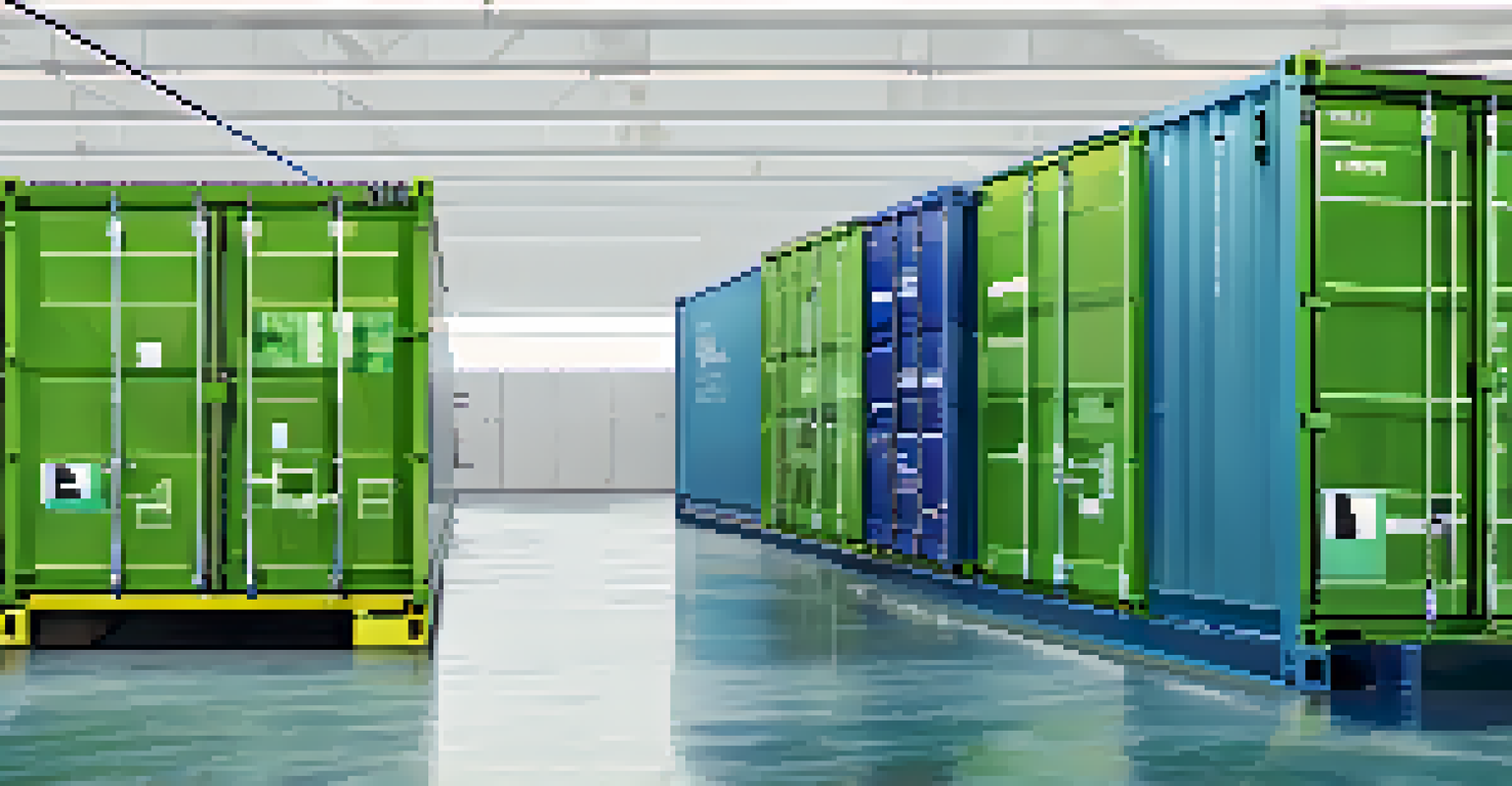Virtualization vs. Containerization: Key Differences Explained

What is Virtualization and How Does It Work?
Virtualization is a technology that allows you to create multiple simulated environments or dedicated resources from a single physical hardware system. Think of it like a magician pulling out several rabbits from a single hat—each rabbit represents a virtual machine (VM) that functions independently. By using a hypervisor, which is software that creates and manages VMs, you can run different operating systems and applications on the same physical server.
Virtualization is not a destination, but a journey that leads to more efficient and flexible IT operations.
This technology not only optimizes hardware usage but also provides isolation between the VMs. If one VM encounters an issue, it won’t affect the others, similar to how a car's engine failure doesn't stop all cars on the road. This isolation enhances security and stability, making virtualization a popular choice for businesses looking to maximize their IT resources.
Overall, virtualization is a powerful tool that can lead to significant cost savings and improved flexibility for IT operations. It’s particularly beneficial for organizations that need to deploy applications quickly, manage workloads efficiently, and ensure optimal resource allocation.
Understanding Containerization and Its Benefits
Containerization, on the other hand, is a lightweight alternative to virtualization that packages applications and their dependencies into isolated units called containers. Imagine containers as shipping boxes that hold everything needed for a product to thrive, including the necessary software libraries and configurations. Unlike VMs, containers share the host operating system's kernel, making them more resource-efficient and faster to start up.

One of the biggest advantages of containerization is its portability. A container can run consistently across different environments, whether it's on a developer's laptop, a test server, or in the cloud. This means developers can build, ship, and run applications quickly, reducing the time it takes to bring new features to market—akin to how a food truck can easily set up shop in various locations.
Virtualization Optimizes IT Resources
Virtualization allows businesses to maximize hardware usage by creating multiple isolated virtual machines on a single physical server.
Additionally, containers promote microservices architecture, allowing applications to be broken down into smaller, manageable components. This modular approach means teams can work on different parts of an application simultaneously, which not only speeds up development but also enhances collaboration.
Key Differences Between Virtualization and Containerization
The primary difference between virtualization and containerization lies in how they utilize the underlying operating system. While virtualization creates multiple VMs with their own OS instances, containerization shares the host OS among multiple containers. This fundamental distinction makes containers more lightweight and faster than virtual machines, which require more overhead.
Containerization is the future of application development, allowing teams to innovate faster and deploy with confidence.
Another key difference is in the deployment and management of resources. Virtual machines often need more resources and can take longer to boot up due to their complete OS environments. In contrast, containers can start almost instantaneously because they share the kernel, making them ideal for applications that need rapid scaling and deployment.
Ultimately, the choice between virtualization and containerization will depend on the specific needs of your organization. If you require complete isolation and the ability to run different operating systems, virtualization might be the way to go. However, if speed, efficiency, and resource management are your priorities, containerization could be the better option.
Use Cases for Virtualization in Businesses
Virtualization is often the go-to solution for businesses that need to consolidate their server infrastructure. For instance, a company operating multiple applications on separate servers can use virtualization to combine them onto fewer physical machines. This not only saves on hardware costs but also simplifies management and maintenance, like organizing a cluttered closet into neat storage boxes.
Another common use case is disaster recovery. By virtualizing servers, businesses can quickly replicate their entire infrastructure in a secondary location. This ensures that critical applications can be restored rapidly in the event of a failure, much like having a backup plan ready for an unexpected storm.
Containerization Enhances Portability
Containers package applications with their dependencies, enabling consistent performance across various environments and rapid deployment.
Furthermore, virtualization is ideal for testing and development environments. Developers can create sandboxed environments to experiment with new software without impacting the main production environment. This flexibility encourages innovation while maintaining stability.
Popular Use Cases for Containerization
Containerization shines in environments where applications require rapid deployment and scaling. For example, many modern web applications utilize containers to ensure that they can handle sudden spikes in traffic without crashing. Think of it as having a flexible team of workers who can quickly ramp up production to meet demand during holiday sales.
Another significant use case is in microservices architecture. By breaking an application into smaller, independently deployable services, organizations can develop and scale parts of their applications separately. This modular approach allows for continuous integration and deployment, making it easier to update applications without disrupting the entire system.
Lastly, containers are particularly advantageous for hybrid cloud environments. They allow businesses to move workloads seamlessly between on-premises infrastructure and public cloud services, offering the flexibility to optimize costs and performance based on current needs.
Security Considerations: Virtualization vs. Containerization
Security is a critical factor when considering virtualization and containerization. In virtualization, each VM is isolated with its own operating system, which provides a high level of security. If one VM is compromised, the others remain unaffected, much like separate rooms in a house where one can be locked without impacting the others.
However, containers share the host OS, which can pose security challenges. While containers are generally secure, vulnerabilities in the kernel can potentially affect all containers. This means that extra precautions need to be taken, such as implementing strict access controls and regular security scans.
Security Varies by Technology Choice
While virtualization offers strong isolation with separate operating systems, containerization's shared kernel may pose security challenges that need addressing.
Ultimately, while both technologies have their security considerations, the choice will depend on the specific architecture of your applications and your organization's overall security posture. Understanding these nuances can help you make informed decisions about which approach aligns best with your security needs.
Future Trends in Virtualization and Containerization
The future of virtualization and containerization is exciting, as both technologies continue to evolve. With the rise of cloud computing, we're seeing an increasing integration of virtualization technologies into cloud services, allowing businesses to leverage both on-premises and cloud resources effectively. This hybrid approach combines the strengths of both methods, offering flexibility and scalability.
On the other hand, containerization is gaining traction with the rise of Kubernetes and other orchestration tools. These tools simplify the management of containers, making it easier for organizations to deploy, scale, and manage containerized applications. It’s like having a conductor leading an orchestra, ensuring that every musician plays in harmony.

As businesses embrace DevOps practices, containerization is likely to become a standard part of the software development lifecycle. The focus will shift towards automation and continuous delivery, allowing teams to respond quickly to changes and innovate faster than ever before. In this landscape, understanding both virtualization and containerization will be essential for staying competitive.